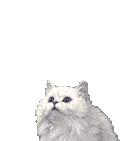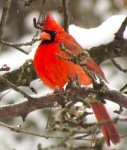Municipal workers, eh? Boy, I'd like to get my utilities...
(ahem)...
Anyway, the thought of midnight cookies and Miller High Lifes (Lives?) brings to light a very important thought, namely, if people have trouble initiating or maintaining sleep, have all of the other contributing factors and possible solutions been considered. This summary, from
Medscape reminds us of the
Nonpharmacologic Strategies
Nonpharmacologic strategies in the treatment of insomnia focus on modifying behavioral and cognitive factors that can lead to and foster sleep disturbances. Behavioral strategies include stimulus control therapy, sleep restriction, relaxation therapies, paradoxical intention, and sleep hygiene education. Cognitive behavioral therapy combines psychotherapy directed at changing inaccurate assumptions and perceptions about sleep and behavioral therapies such as stimulus control and sleep restriction. Numerous studies have shown that nonphar-macologic strategies are effective in the treatment of insomnia. Behavioral and cognitive interventions are typically implemented when pharmacotherapy is contraindicated or as augmentation to pharmacotherapeutic inter-ventions but may also be used as monotherapy in patients with short-term, mild insomnia. Most nonpharmacologic interventions can be combined with one another or with pharmacologic interventions to optimize outcomes, particularly in those with chronic and debilitating insomnia.
Stimulus control is used to decondition the individual from bedtime cues that perpetuate wakefulness rather than sleep. Time to fall asleep is limited to 20 minutes and, if not asleep within that set time period, patients are instructed to get out of bed, engage in relaxing activities, and return only when feeling sleepy. Sleep restriction therapy is aimed at reassociating the bed with sleep and limits the amount of time spent in bed to only the total number of hours actually spent asleep. When used separately or in conjunction, stimulus control and sleep restriction have been shown to be superior to placebo and as effective as pharmacotherapy for improving sleep latency and total sleep time.
Sleep hygiene recommendations include the following list of sleep-related behaviors and environmental conditions that promote an atmosphere conducive to improving the quality and quantity of sleep:
Attempt to maintain a regular sleep-wake cycle
Use the bedroom only for sleep and intimacy
Create a comfortable, quiet, dark, and temperature-controlled bedroom environment
Develop a relaxing routine within an hour before bedtime
Exercise regularly, but not within a few hours of bedtime
Avoid the use of alcohol, caffeine, or nicotine, especially within a few hours of bedtime
Avoid late heavy meals before bedtime
Avoid daytime napping
Avoid disturbances at bedtime (e.g., disruptive noises, pets, family)
Avoid keeping a clock close to the bed to prevent "clock watching"
Avoid excessive wakeful time in bed (> 20 min)
Sleep hygiene problems are rarely the primary cause of chronic insomnia, and improving sleep hygiene alone is unlikely to affect severe insomnia. They can, however, perpetuate sleep disturbances and impede recovery. Therefore, independent of the cause of the sleep disturbance, initial treatment strategies should include education regarding proper sleep habits and behaviors.
Paradoxical intention is a strategy that attempts to change patient-specific unrealistic sleep expectations by having patients stay awake as long as they are able. If successful, this technique leads to decreased performance anxiety about falling asleep and decreased concern regarding the consequences of sleeplessness. Relaxation therapies for insomnia specifically target the physiologic hyperarousal resulting from tension and stress, for example, that are characteristic of some individuals with sleep disturbances. Not enough evidence exists to support the use of relaxation therapies as the sole intervention in the management of insomnia. However, relaxation therapy in the form of progressive muscle relaxation, meditation, simple breathing retention, or guided imagery may serve as an adjunct to other behavioral or cognitive approaches.
Cognitive therapy addresses patient-specific unrealistic expectations about sleep and misconceptions about the causes of insomnia. The addition of behavioral techniques to cognitive therapy has been shown to produce longer lasting improvements in sleep parameters, particularly sleep latency, than the use of behavioral techniques or pharmacologic therapy alone. In the elderly (8E 60 yrs), cognitive behavioral therapy appears to be effective for sleep-maintenance insomnia.
Advantages of behavioral and cognitive strategies include a low adverse-effect profile and evidence of sustained improvement in sleep parameters over 6 months. Lack of personnel trained in the provision of these strategies, high out-of-pocket cost, the assumption that phar-macologic interventions are more efficacious, and the fact that these techniques are time intensive all limit the applicability of nonpharmacologic interventions. In addition, because gains in sleep onset or total sleep time are not immediately attained, patient motivation and encouragement are required. Some studies suggest that the efficacy of behavioral and cognitive interventions decreases with increasing age.
SAG is not familiar with the acronym "8E", as in
article wrote:In the elderly (8E 60 yrs)
but he believes it means, "right now my skull is intact, but I'm looking for somebody to come stove it in with a length of lead pipe that's an 'elderly' person".
SAG













